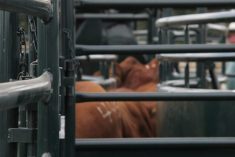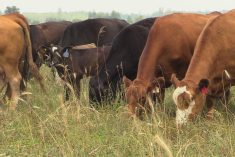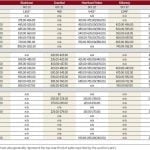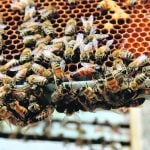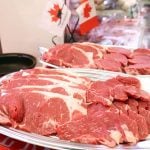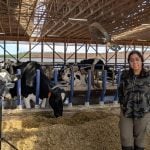Chicago | Reuters –– U.S. live cattle futures scaled to their highest point in 5-1/2 months on Wednesday as tighter-than-expected beef stocks and rising cash beef prices triggered active fund buying that took prices through key technical resistance levels.
Actively traded contracts posted their strongest gains in nearly a month, breaking out of a narrow trading range that had constrained price movement over much of the past week.
Chicago Mercantile Exchange (CME) December live cattle settled 1.55 cents higher at 115.25 cents/lb. after breaching chart resistance around the 115-cent level (all figures US$). February live cattle broke through technical resistance around 120 cents, closing 1.325 cents higher at 120.425 cents/lb.
Read Also

China to buy 12 million metric tons of soybeans this season, Bessent says
U.S. Treasury Secretary Scott Bessent said on Thursday that China has agreed to buy 12 million metric tons of American soybeans during the current season through January and has committed to buying 25 million tons annually for the next three years as part of a larger trade agreement with Beijing.
After Tuesday’s close, the U.S. Department of Agriculture (USDA) said U.S. beef stocks in cold storage declined 1.2 per cent in September from a month earlier and 8.5 per cent from a year earlier. Many traders had expected a supply increase or a smaller decline.
Wholesale beef prices have also been rising, with choice cuts up $2.35 on Wednesday at $223.28/cwt, up $5.52 from a week ago.
Feeder cattle futures followed live cattle higher, further supported by weak grain prices.
CME November feeder cattle futures were up 1.25 cents at 144.75 cents/lb., while the actively traded January contract was up 1.4 at 141.2 cents.
Lean hog futures were mostly lower, pressured by weakening pork prices and concerns that pork purchases by China have not lived up to market expectations.
“We’ve rallied the deferred contracts because of an anticipation in Chinese purchases. Those purchases probably will come but they have put on a very high premium,” said Jeff French, analyst with Top Third Ag Marketing in Chicago.
Adequate stocks of pork in U.S. cold storage also weighed on the market, after USDA reported total pork stocks at the end of September up 1.6 per cent from a year earlier. Closely watched stocks of pork bellies at the end of September were up 34 per cent from a year ago at the highest since 1971, USDA data showed.
December lean hog futures settled 0.325 cent at 65.825 cents/lb., while February futures fell 1.175 cents to 75.1 cents/lb.
— Karl Plume reports on agriculture and ag commodities for Reuters from Chicago.







